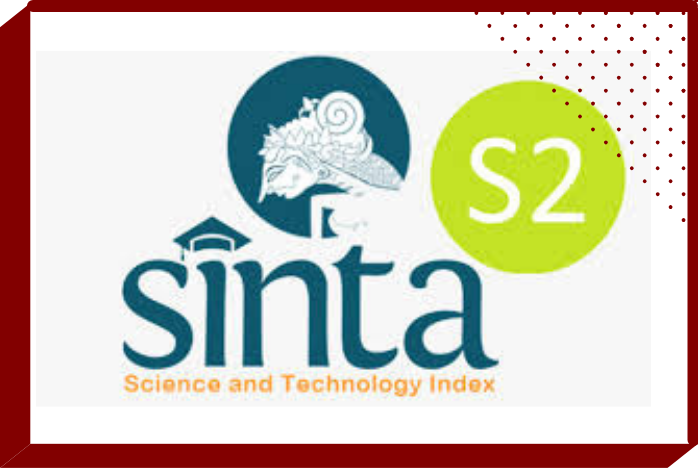Suara Naratif dalam Na Willa Karya Reda Gaudiamo: Perspektif Naratologi Gerard Genette
 Abstract views: 396
,
Abstract views: 396
,
 PDF downloads: 410
PDF downloads: 410
Abstract
In the children's novel Na Willa, there are significant differences in narrative development compared to children's stories in general. The difference is seen in the approach to the delivery of advice, teachings, and morals. In Na Willa the narrative is still present, but not as the purpose of the story. This study aims to find the narrative voice and reveal its function in Na Willa's novel. The research results identify three categories of narrative voice in this novel, including 1) storytelling time with subsequent, prior, simultaneous, and interpolated techniques, 2) narrator techniques using homodiegetic and autodiegetic narrators, and 3) narrative level at extradiegetic-homodiegetic. The findings conclude that the function of narrative voice in the novel is not only as a tool to convey the story, but also to build emotional closeness with the reader. The approach of using children's point of view or perspective as the narrator and main character allows child readers to feel more connected and enjoy the story more freely and creatively.
Downloads
References
Afiannisa, I. (2020). Perkembangan Kognitif Tokoh Utama dalam Serial Novel Na Willa karya Reda Gaudiamo: Analisis Psikologi Sastra Jean Piaget. Universitas Gadjah Mada.
Bal, M., & Lewin, J. E. (1983). The Narrating and the Focalizing: A Theory of the Agents in Narrative Author(s). Penn State University, 17(2), 234–269.
Didipu, H. (2018). Struktur Naratif Novel Osakat Anak Asmat karya Ani Sekarningsih (Perspektif Naratologi Gerard Genette). Aksara, 19(1), 15–17.
Didipu, H. (2019). Teori Naratologi Gerard Genette: Tinjauan Konseptual. Telaga Bahasa, 7(2), 163–172.
Evanda, T. (2017). Kajian Naratologi Roman Reckless–Steinernes Fleisch Karya Cornelia Funke. Universitas Negeri Yogyakarta.
Gaudiamo, R. (2018). Na Willa. Jakarta: Post Press.
Genette, G. (1980). Narrative Discourse: An Essay in Method (Translated by Jane E). New York: Cornell University Press.
Herdiansyah, H. (2010). Metodologi Penelitian Kualitatif. Jakarta: Penerbit Salemba Humanika.
Nurgiyantoro, B. (2005). Sastra Anak: Pengantar Pemahaman Dunia Anak. Yogyakarta: Gadjah Mada University.
Nursidiq, S. I. (2023). Nilai-nilai Pendidikan Karakter dalam Novel Na Willa dan Rumah dalam Gang karya Reda Gaudiamo dan Kelayakannya sebagai Bahan Ajar Sastra di SMA SMA. Universitas Pendidikan Indonesia.
Pier, J. (2014). “Narrative Levels”. In: Hühn, Peter et al. (eds.): The Living Handbook of Narratology. Hamburg: Hamburg University.
Rahayu, T., Supratano, H., dan Raharjo, R. P. (2020). Suara Naratif dalam Novel Merindu Baginda Nabi karya Habiburrahman El Shirazy (Perspektif Naratologi Gerard Genette). Sastranesia, 8(2), 114–121
Rarasati, R. (2023). Kebutuhan Bertingkat pada Tokoh Anak dalam Novel Na Willa karya Reda Gaudiamo (Tinjauan Psikologi Humanistik). Universitas Islam Negeri Raden Mas Said Surakarta.
Sarumpaet, R. K. T. (2010). Pedoman Penelitian Sastra Anak: Edisi Revisi. Jakarta: Yayasan Pustaka Obor Indonesia.
Scheffel, M., Weixler, A., & Werner, L. (2013). “Time”. In: Hühn, Peter et al. (eds.): The Living Handbook of Narratology. Hamburg: Hamburg University.
Copyright (c) 2024 GHANCARAN: Jurnal Pendidikan Bahasa dan Sastra Indonesia

This work is licensed under a Creative Commons Attribution-ShareAlike 4.0 International License.
Ghancaran: Jurnal Pendidikan Bahasa dan Sastra Indonesia uses an Open Access Policy under the Creative Commons Attribution-ShareAlike 4.0 International License. Authors publishing in this journal agree to the following terms:
- Ghancaran Journal holds the copyright and grants the journal rights for first publication with the work simultaneously licensed under a

The work is distributed under Creative Commons Attribution-ShareAlike 4.0 International License which allows others to share, copy, and redistribute the material in any media or format and adapt, remix, change, and develop the material even for commercial purposes, as long as it is stated credit and license derivative works under similar terms. - Authors may make additional contractual arrangements for non-exclusive distribution of the journal's published work version.
- Authors are permitted to post their work online (e.g., in institutional repositories or on their websites) before and during submission, as doing so may lead to productive exchange.


















